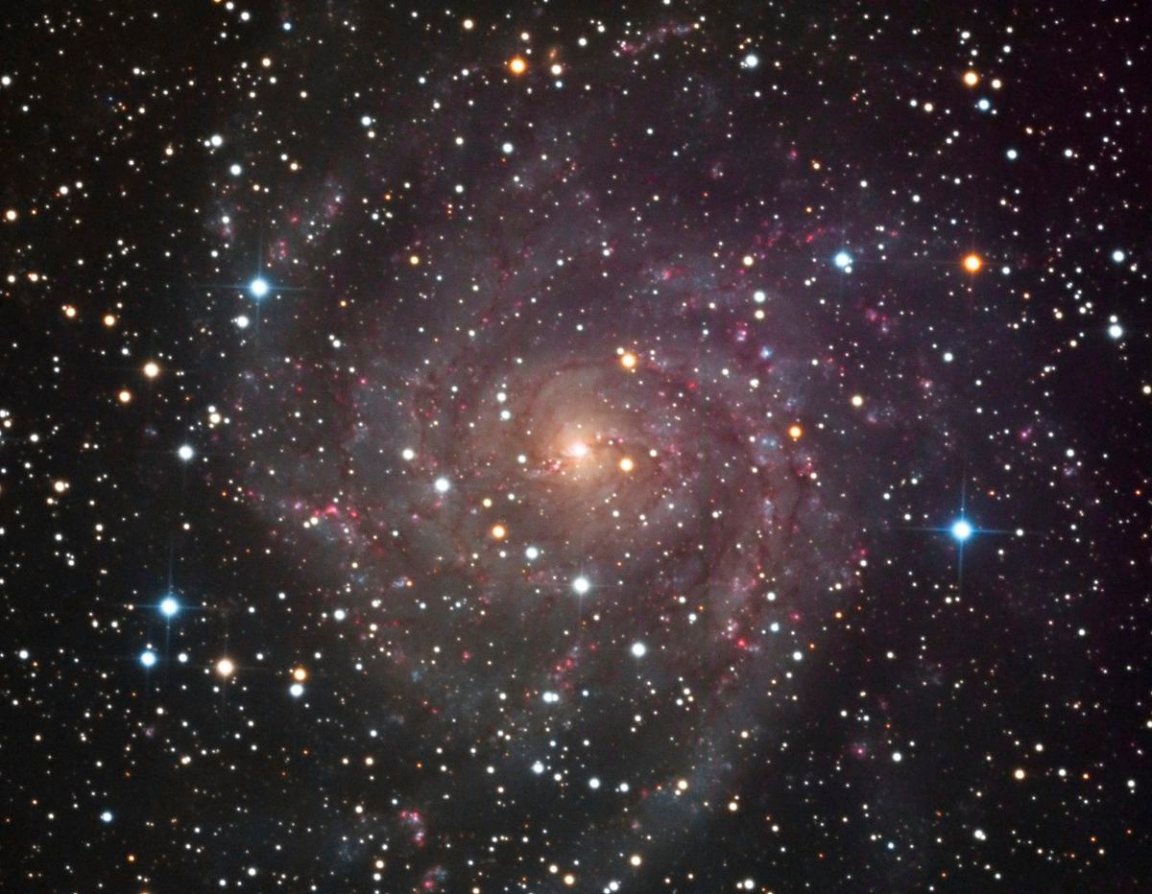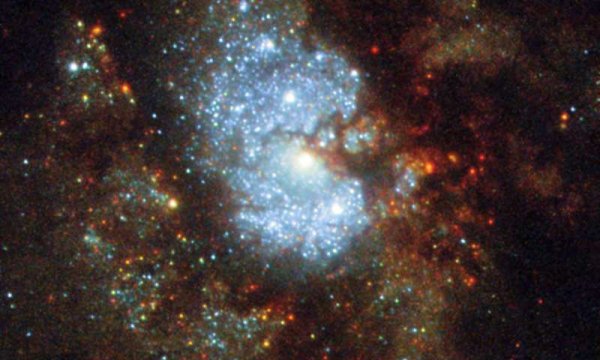
IC 342
The IC 342, or the “Hidden Galaxy,” is a galaxy that is located near the Milky Way’s galactic disk; a cloudy, dusty region that has so far been exceedingly difficult for scientists to see. While it is (cosmically) relatively close to the Milky Way — 10 million light-years away from us — the nature of this galaxy’s location has presented researchers with many challenges. It is true that IC 342 is gloriously bright and fairly large. But between us and this galaxy are stars, a variety of gases, and billowing clouds of cosmic dust. And so, even though researchers are using technologies as advanced as the Hubble Space Telescope, it continues to be “hidden” and difficult to image and, therefore, study.

It might be surprising to know that, despite the many advancements in space technology, there are still many cosmic objects that remain relatively mysterious to us because, simply, we cannot see them. One example happened just last year, as researchers finally were able to observe a particularly elusive brown dwarf. Seen as a link between planets and stars, it is essential that we understand these cosmic objects as best we can.
It was a long and arduous journey for scientists to capture a picture of Pluto that provided substantial detail or information. The Hubble Space Telescope, while a vital resource, simply was not up to the task in the same way that the New Horizons spacecraft was. Throughout our Solar System and beyond, there exist obstacles as simple as dust that have a surprisingly massive impact on our ability to observe and study the cosmos.
Future Observations
IC 342 remains relatively elusive — that is, with current technologies like probes and the Hubble Space Telescope. The conditions surrounding this galaxy are insurmountable by existing means. But this doesn’t mean that regions of the cosmos like IC 342 are visually “off-limits” forever. Set to launch in October 2018, the James Webb Space Telescope (JWST) is poised to replace the Hubble, providing improvements that might hopefully expand our view and knowledge of the Universe that we inhabit. This telescope is said to be so powerful that it could even detect a bumblebee on the Moon. In addition to this, the Hydrogen Epoch of Reionization Array (HERA) radio telescope is being upgraded to allow scientists to observe what the Universe was like 13 billion years ago. Researchers are even using the Sun, through gravitational lensing, to improve our telescopic abilities and further expand our cosmic observational capacity.
Technologies like the JWST and the application of gravitational lensing will only continue to develop. At this moment, galaxies like IC 342 remain mysterious. While scientists can, and have, explore and analyze them through the limited information available, there is still much that is unknown. But, just as cosmic objects like the troublesome brown dwarf and Pluto have moved from relative obscurity to become the subjects of detailed portraits, parts of the Universe that are now elusive might not always be that way. Technological advances will certainly not be slowing down anytime soon and, as so many push to get humans to Mars and continue to incorporate machine learning with advancing robotics, there’s no telling what innovation and ingenuity might arise. We might learn more about the different cosmic objects that inhabit our Solar System or even further investigate the potential for existing life outside of Earth.
With the combination of JWST’s launch and other emerging telescopic advancements alongside potential future inventions, the shadowy places that exist throughout the Universe will be lit. Seeing as how the Universe is expanding and we inhabit such an infinitesimally small piece of it, there might always be parts of the cosmos that elude us. The quest for knowledge and to see what we could not see before might never have an end, but this just means that we have infinite possibilities for exploration.